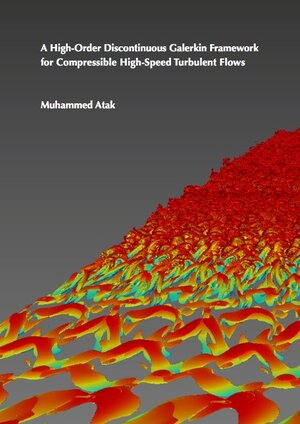
×
![Buchcover ISBN 9783843941433]()
A High-Order Discontinuous Galerkin Framework for Compressible High-Speed Turbulent Flows
von Muhammed AtakThe direct simulation of turbulent flows leads to significant computational expenses and is thus limited to low Reynolds numbers. With the advent of increasing computation resources available on today's modern supercomputer systems, however, the direct numerical simulation (DNS) of turbulent flows has become both more feasible and an interesting challenge for high performance computing (HPC). Hence, in addition to accuracy, a strong emphasis is now also placed on the HPC attributes of the underlying numerical scheme to conduct high-fidelity simulations in an efficient way. In this context, DG methods enjoy a growing popularity since they combine arbitrarily high accuracy, geometrical flexibility and effective parallelization. Particularly, the collocation type formulation of the classical DG method on tensor-product elements, namely the discontinuous Galerkin spectral element method (DGSEM), yields superior efficiency on massively parallel systems. Therefore, the DGSEM is considered as a promising approach to conduct DNS of turbulent flows in an efficient way. Despite their high accuracy and efficient parallelization, DG methods are still in their infancy when compared to the traditional methods (e. g. finite difference and finite volume schemes) widely used in the computational turbulence community. Especially, there is insufficient experience in DG method applications to compressible high-speed turbulent flows. Within the scope of the present work, we thus present and apply a high-order DGSEM framework to direct simulations of compressible transitional and turbulent flows at high speeds with and without shock waves to demonstrate its strong potential for demanding HPC simulations.


